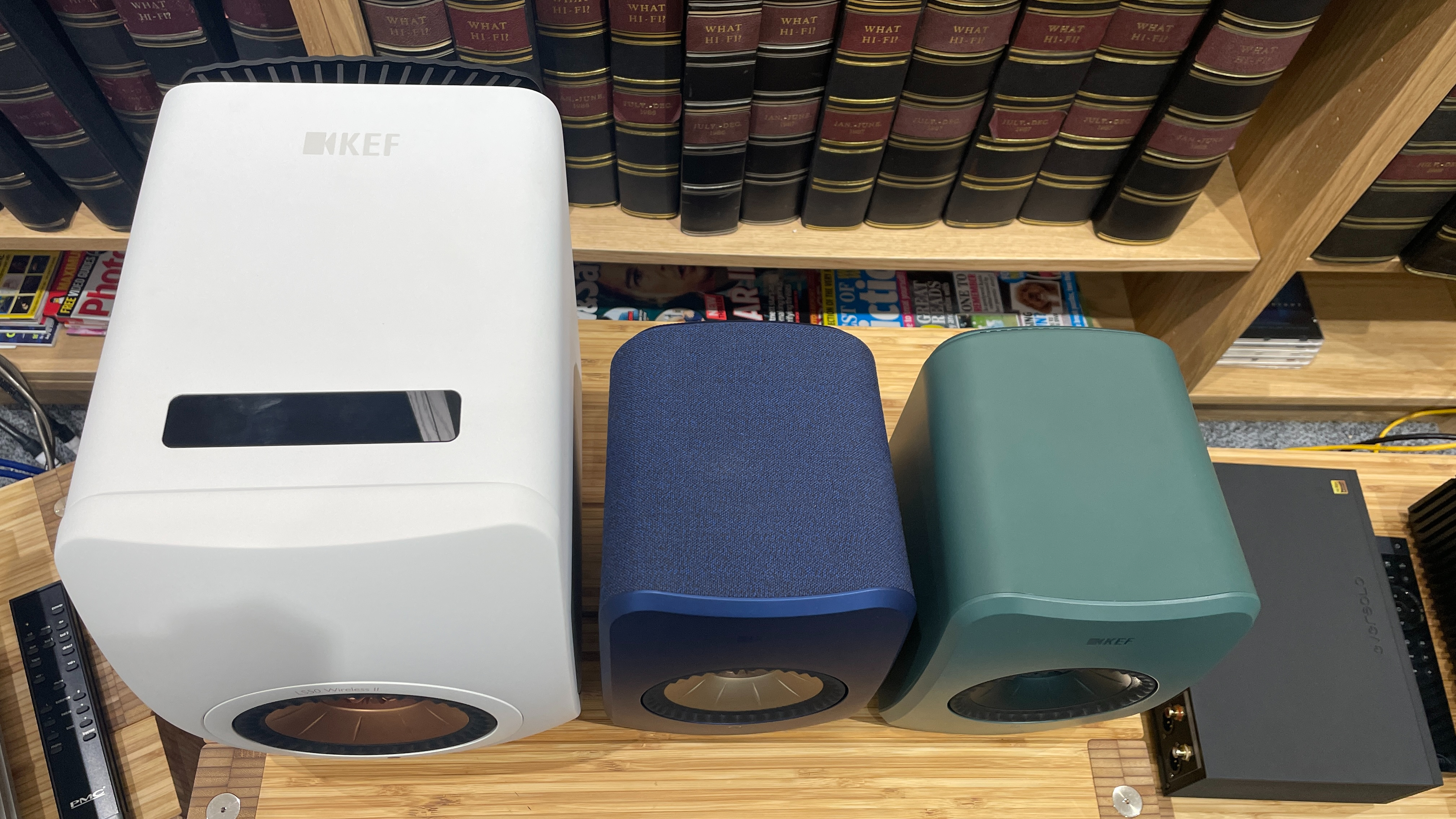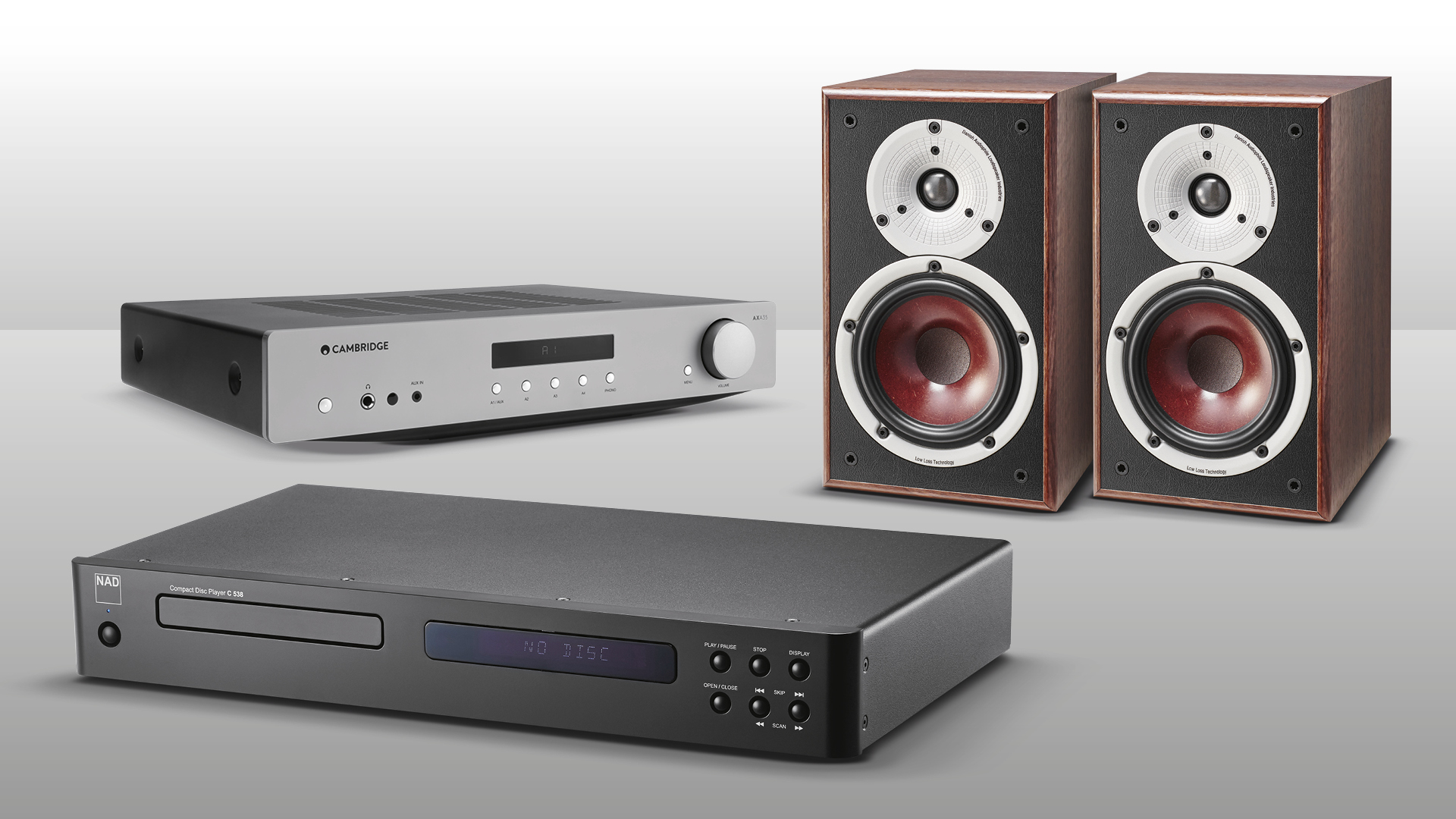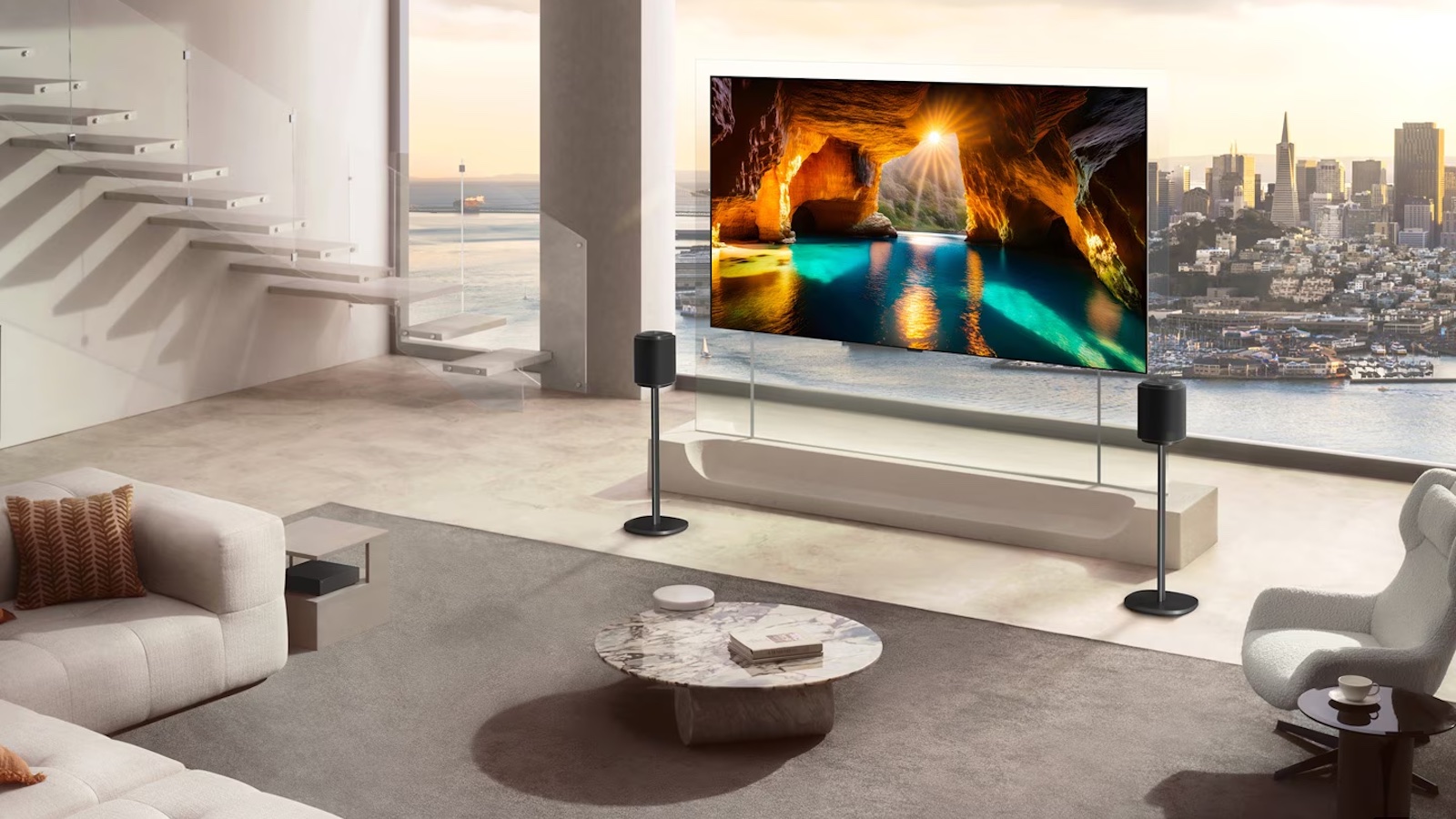Speaker systems are in danger of killing budget hi-fi separates, but they shouldn't
I hope the two can continue to coexist harmoniously

The reviewing team at What Hi-Fi? has just had the pleasure of yet another all-in-one (or should I say ‘all-in-two’) stereo speaker system in our test rooms, the KEF LSX II LT. Those of you acquainted with the company’s existing LSX II and the world’s more arcane acronyms may correctly guess that this newcomer is the “lite” version of the current system – think same sound but with fewer features and different finishes. Indeed, it offers a whole system – streaming platforms, amplification and speakers – in two compact boxes.
That isn’t a novel concept, of course. For the past eight or so years, such speaker systems have cropped up to offer consumers a more space-saving and convenient alternative to a separates hi-fi set-up (that is, one with components separately housed, all connected with cables and each requiring a solid support). But the new LSX II LT is one of a few examples of very affordable models that have arrived recently to offer proper – ‘hi-fi’ – stereo sound in what many people would quite rightly consider an attractively accommodating package. We’re talking as little as £700/$900 (Triangle AIO Twin) and £900/$1000 (KEF LSX II LT) and steadily pricier systems up to around five times that amount. And yes, it has me slightly worried about the entry-level hi-fi separates market.
After all, why invest in and have to accommodate four boxes and metres of cables when you can spend the same on two that don’t require cabling? There are reasons to, which I’ll go into shortly, but understandably they may not be obvious, or indeed significant enough, to many people.
I should say that this isn’t a downer on speaker systems. I’m a big advocator of them; their balance of sound maturity and convenience is admirable – sometimes surprisingly so – and they bring hi-fi to those who would be as likely to entertain a separates system in their living room as a hornet’s nest. But for those who are open to both, separates hi-fi still has its part to play.
If you are reading this screaming “separates sound better!”, you are right… to some extent. A comparison between the KEF LSX II LT and a similarly priced budget separates system – say, a Wiim Pro Plus streamer, Marantz PM6007 or Cambridge AXA35 amplifier and Elac Debut B5.2 or Dali Spektor 2 bookshelf speakers plus cables – isn't straightforward, just as comparisons higher up the market wouldn’t be entirely black and white either. The KEF all-in-one would excel in punch, power and deeper bass – to some degree due to their active, digital nature – though the separates would reply with greater subtlety and, in absolute terms, insight. Purely in sonic terms, I know I would be more satisfied with the separates over a longer period – but ultimately there aren’t acres of quality between them.

That this kind of system can pretty much stand toe to toe (or at least toe to tarsal!) with traditional separates is rather novel and a testament to their evolution in recent years. Budget separates, meanwhile, are evolving at a more modest pace. Anyone who keeps an eye on the What Hi-Fi? Awards may have clocked that many current winners in the entry-level speaker, turntable and amplifier market are multiple repeat winners – not because we haven’t been bothered to review any newcomers but because newcomers, let alone better ones, aren’t all that forthcoming these days. Onkyo used to make a decent budget stereo amplifier, but nowadays we can’t find one we can heartily recommend below £350/$400, and not for want of trying. WiiM's Pro Plus streamer is perhaps the exception, being pretty new, very affordable and a decent performer.
That relative lack of new competition and slow progress may be part of the problem. Are budget electronics no longer popular or feasible enough for manufacturers to focus their efforts on? More obvious snags are their inherent demands on space and plug sockets, not to mention their relatively traditional aesthetics compared with more lifestyle-orientated (colourful, compact, glossy…) systems. Sexy, budget hi-fi separates are not.
The latest hi-fi, home cinema and tech news, reviews, buying advice and deals, direct to your inbox.
The happy medium that could well prosper more than either for sound quality-conscious consumers might very reasonably be the streaming amplifier with stereo speakers setup. Fine by me. But part of me does hope that traditional budget separates find a new lease of life and renewed relevance.
From experience, I can say that the sonic satisfaction something gives you over a longer period is pretty important in owning and enjoying hi-fi and music. I have lived with streaming systems and would be lying if I said I hadn’t enjoyed their practicality and naturally synergistic (tight and integrated) presentation; but after a while something about them becomes disinteresting, whether that concerns dynamic expression or space between instruments, or simply that there’s not much to think about. System matching and, to a large degree, system set-up, which are the most tangible, hands-on parts of hi-fi, are moot.
A separates setup is, I think, more likely to prompt you to upgrade down the line to eke out more of what you have, too – detail, scale, bass extension or whatnot. And naturally upgrading a separates system can be much more incremental, involving, rewarding and less daunting – i.e. more enticing! – than having to swap out the whole thing in one go. If nothing else, the effort of building one against the pleasure of listening to one can tell you whether the hobby (and inherent upgrade path!) is worth pursuing or not.
The appeal of streaming stereo speaker systems is understandable, not only for casual listeners who want more than a single-box wireless speaker but also for those who consider themselves closer on the sound-savvy spectrum to ‘audiophile’. They are accessible, domesticated and the best sound pretty darn good. But I hope they sit beside separates rather than quash them, and for that to happen I feel there needs to be a budget component resurgence.
MORE:
Read the full KEF LSX II LT review
Should you buy a streaming amplifier? Here are 3 key pros and 2 cons to consider
The best hi-fi systems you can buy

Becky is a hi-fi, AV and technology journalist, formerly the Managing Editor at What Hi-Fi? and Editor of Australian Hi-Fi and Audio Esoterica magazines. With over twelve years of journalism experience in the hi-fi industry, she has reviewed all manner of audio gear, from budget amplifiers to high-end speakers, and particularly specialises in headphones and head-fi devices.
In her spare time, Becky can often be found running, watching Liverpool FC and horror movies, and hunting for gluten-free cake.
